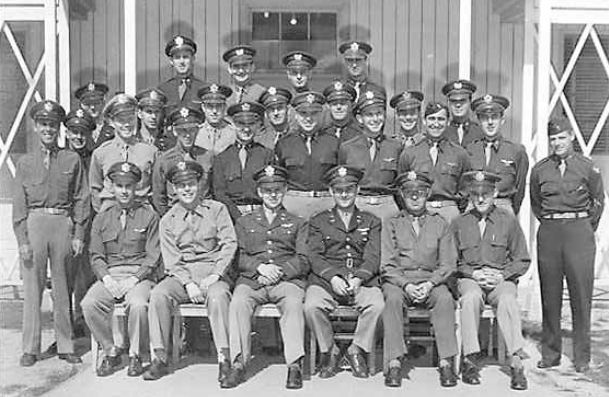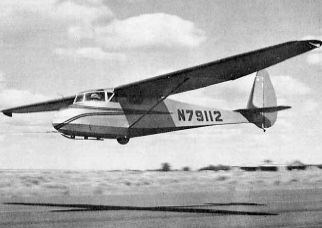Condor Field on:
[Wikipedia]
[Google]
[Amazon]


 Condor Field was an airbase located in
Condor Field was an airbase located in


 Condor Field was an airbase located in
Condor Field was an airbase located in Twentynine Palms, California
Twentynine Palms (also known as 29 Palms) is a city in San Bernardino County, California. Twentynine Palms serves as one of the entry points to Joshua Tree National Park.
History
Twentynine Palms was named for the palm trees found there in ...
used for training both in World War II
World War II or the Second World War, often abbreviated as WWII or WW2, was a world war that lasted from 1939 to 1945. It involved the vast majority of the world's countries—including all of the great powers—forming two opposin ...
and the Korean War
, date = {{Ubl, 25 June 1950 – 27 July 1953 (''de facto'')({{Age in years, months, weeks and days, month1=6, day1=25, year1=1950, month2=7, day2=27, year2=1953), 25 June 1950 – present (''de jure'')({{Age in years, months, weeks a ...
. From 1939 to 1942, and from 1945 to 1949, it was operated as a civil airport. The now-abandoned airfield is on the Marine Corps Air Ground Combat Center Twentynine Palms
The Marine Corps Air Ground Combat Center (MCAGCC), also known as 29 Palms, is the largest United States Marine Corps base. It was a census-designated place (CDP) officially known as Twentynine Palms Base located adjacent to the city of Twentynin ...
. In about 1939, a 3,000-foot runway was built at the southeast edge of dry lake
A dry lake bed, also known as a playa, is a basin or depression that formerly contained a standing surface water body, which disappears when evaporation processes exceeds recharge. If the floor of a dry lake is covered by deposits of alkaline c ...
Mesquite Lake as a civil field and named ''Twenty Nine Palms Airfield''.
History
The Twenty Nine Palms airfield was taken over on January 1, 1942 and renamed Condor Field forUnited States Army Air Forces
The United States Army Air Forces (USAAF or AAF) was the major land-based aerial warfare service component of the United States Army and ''de facto'' aerial warfare service branch of the United States during and immediately after World War II ...
military glider
Military gliders (an offshoot of common gliders) have been used by the militaries of various countries for carrying troops (glider infantry) and heavy equipment to a combat zone, mainly during the Second World War. These engineless aircraft were ...
training. The army built an 1800 x 3000 foot landing mat for the training. The main use was during World War II as a US Army
The United States Army (USA) is the land service branch of the United States Armed Forces. It is one of the eight U.S. uniformed services, and is designated as the Army of the United States in the U.S. Constitution.Article II, section 2, cla ...
glider
Glider may refer to:
Aircraft and transport Aircraft
* Glider (aircraft), heavier-than-air aircraft primarily intended for unpowered flight
** Glider (sailplane), a rigid-winged glider aircraft with an undercarriage, used in the sport of glidin ...
school. An additional airfield was needed, so the Twentynine Palms Airport
Twentynine Palms Airport is a public use airport located six nautical miles (11 km) east of the central business district of Twentynine Palms, a city in San Bernardino County, California, United States. It is owned by the County of San Be ...
, 6 miles east of Condor Field, was also taken over for glider training. The United States Army Air Forces Contract Flying School Airfields
During World War II civilian flying schools, under government contract, provided a considerable part of the flying training effort undertaken by the United States Army Air Forces.Manning, Thomas A. (2005), ''History of Air Education and Training ...
opened the training center, and called it the Twenty-Nine Palms Air Academy. The Academy had four auxiliary airfields in the local area. Flight training was performed with Fairchild PT-19
The Fairchild PT-19 (company designation Fairchild M62) is an American monoplane primary trainer aircraft that served with the United States Army Air Forces, RAF and RCAF during World War II. Designed by Fairchild Aircraft, it was a contempora ...
s as the primary trainer. It also had several PT-17 Stearman
The Stearman (Boeing) Model 75 is a biplane formerly used as a military trainer aircraft, of which at least 10,626 were built in the United States during the 1930s and 1940s. Stearman Aircraft became a subsidiary of Boeing in 1934. Widely known ...
s and a few P-40 Warhawk
The Curtiss P-40 Warhawk is an American single-engined, single-seat, all-metal fighter and ground-attack aircraft that first flew in 1938. The P-40 design was a modification of the previous Curtiss P-36 Hawk which reduced development time and ...
s assigned. For the War, the last training was in the Waco CG-4
Waco ( ) is the county seat of McLennan County, Texas, United States. It is situated along the Brazos River and I-35, halfway between Dallas and Austin. The city had a 2020 population of 138,486, making it the 22nd-most populous city in the st ...
gliders. The Academy conducted basic flight training from March 1943 until April 1944. General Henry H. Arnold
Henry Harley Arnold (June 25, 1886 – January 15, 1950) was an American general officer holding the ranks of General of the Army and later, General of the Air Force. Arnold was an aviation pioneer, Chief of the Air Corps (1938–1941), ...
, Chief of the Army Air Forces, ordered the training for 150 glider pilots for World War II. By the end of WW2 over 6,000 glider pilots had been trained. In all 1,654 of the glider pilots were trained at the Twentynine Palms Air Academy. The site of the
Training and stationed at Condor Field:
* 17th Army Air Forces Flying Training Detachment.
*Air Depot Detachment to Twentynine Palms Air Academy, a Contract Flying.)
*Army Air Forces Weather Station, type C.
*The Civil Contract Flying School.
With Invasion of Normandy
Operation Overlord was the codename for the Battle of Normandy, the Allied operation that launched the successful invasion of German-occupied Western Europe during World War II. The operation was launched on 6 June 1944 (D-Day) with the Norm ...
on June 6, 1944, all the glider training was complete by April 1944 and the airfield was closed. Late in 1944, the US Navy
The United States Navy (USN) is the maritime service branch of the United States Armed Forces and one of the eight uniformed services of the United States. It is the largest and most powerful navy in the world, with the estimated tonnage of ...
took over the airfield and renamed it Twentynine Palms Naval Auxiliary Air Station. When it was under USN control, it became an auxiliary airfield to NAS San Diego
Naval Air Station North Island or NAS North Island , at the north end of the Coronado peninsula on San Diego Bay in San Diego, California, is part of the largest aerospace-industrial complex in the United States Navy – Naval Base Coronado (NB ...
. The airfield built for glider training was not strong enough for the Navy's Lockheed Ventura
The Lockheed Ventura is a twin-engine medium bomber and patrol bomber of World War II.
The Ventura first entered combat in Europe as a bomber with the RAF in late 1942. Designated PV-1 by the United States Navy (US Navy), it entered combat in 1 ...
and Consolidated PB4Y-2 Privateer
The Consolidated PB4Y-2 Privateer is an American World War II and Korean War era Maritime patrol aircraft, patrol bomber of the United States Navy derived from the Consolidated B-24 Liberator. The Navy had been using B-24s with only minor modif ...
, so the Navy built a new runway on the dry lake out of Marston Matting
Marston Mat, more properly called pierced (or perforated) steel planking (PSP), is standardized, perforated steel matting material developed by the United States at the Waterways Experiment Station shortly before World War II, primarily for the ...
. After the war in October 1945, the Navy closed the Twentynine Palms Naval Auxiliary Air Station. The airfield returned as a civil airport now with a 4,000 foot paved runway.
For the Korean War, there was a need for a live-fire training range. So, in 1952, Condor Field reopened as Marine Corps Training Center Twentynine Palms and the airfield was called an expeditionary airfield. A second 6,000-foot steel-mat runway was added for jet and cargo plane use. The Lockheed C-5 Galaxy
The Lockheed C-5 Galaxy is a large military transport aircraft designed and built by Lockheed, and now maintained and upgraded by its successor, Lockheed Martin. It provides the United States Air Force (USAF) with a heavy intercontinental-rang ...
came out in December 1969, and there was a need for a longer paved runway to support large heavy planes. A new airfield was built in 1976, located 8 miles northwest of the original airfield. In 1979, Condor Field was closed as the new airfield became completely operational. The site of the old Condor Field is now located near the main entrance to the Marine Corps Air Ground Combat Center Twentynine Palms off the west side of Adobe Road.
See also
*California during World War II
California during World War II was a major contributor to the World War II effort. California's long Pacific Ocean coastline provided the support needed for the Pacific War. California also supported the war in Europe. After the Japanese attack ...
*Desert Training Center
The Desert Training Center (DTC), also known as California–Arizona Maneuver Area (CAMA), was a World War II training facility established in the Mojave Desert and Sonoran Desert, largely in Southern California and Western Arizona in 1942.
It ...
References
{{DEFAULTSORT:Condor Field Closed training facilities of the United States Army Installations of the United States Army in California Formerly Used Defense Sites in California California in World War II 1940s in California Mojave Desert History of San Bernardino County, California Military installations established in 1942 Condor Field Condor Field